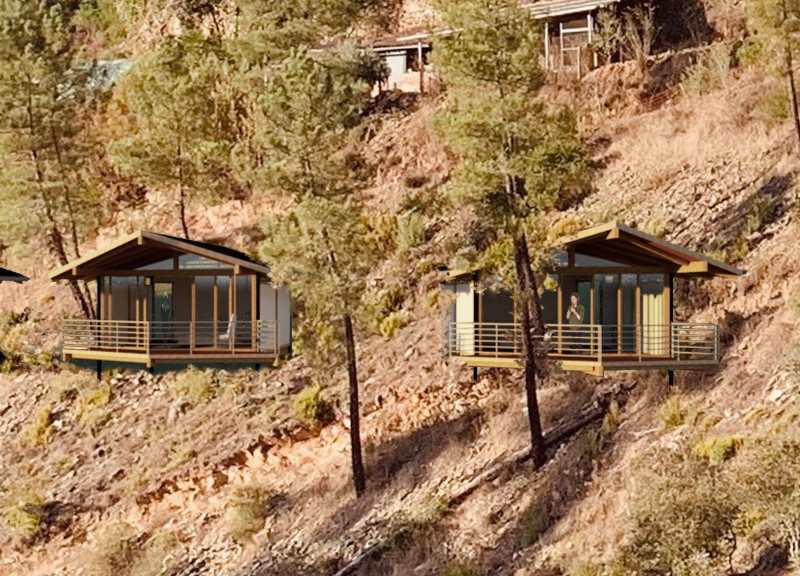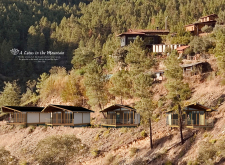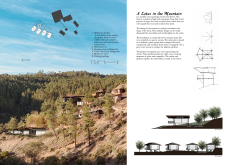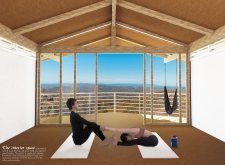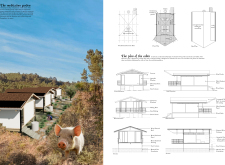5 key facts about this project
The project prominently features modular cabins that resemble the gentle unfolding of lotus petals, symbolizing purity and enlightenment. This unique conceptual approach allows for flexibility in use, making the cabins adaptable to different user needs, promoting an environment of both solitude and togetherness. Each cabin's design incorporates large windows that frame picturesque views of the surrounding mountains, blurring the boundaries between the interior and the natural world outside. The architecture is intentionally minimalistic, encouraging a sense of calmness and clarity that aligns with the project’s meditative purpose.
Key aspects of the project include the incorporation of a meditation garden, which serves as the heart of the retreat. This garden, paved with native cobblestones, features a tranquil water fountain that provides a serene auditory backdrop, inviting visitors to pause and reflect. The layout encourages movement throughout the site via gentle pathways leading to communal spaces, hammock areas, and individual cabins. Each element is strategically placed to enhance the overall user experience, promoting a balance between individual reflection and community interaction.
The choice of materials underscores the project’s commitment to sustainability. Natural wood is extensively used in flooring and structural elements, fostering a warm and inviting atmosphere. The use of durable metal sandwich panels for roofing ensures that the structures maintain their integrity through evolving weather conditions while offering energy efficiency. In addition, the integration of solar panels into the design supports an eco-friendly ethos by generating renewable energy for the cabins. This conscious choice in materials not only aligns with the environmental landscape but also enhances the retreat’s resilience over time.
Interior spaces have been designed with functionality in mind, featuring an open layout that maximizes natural light. This thoughtful arrangement not only connects the inhabitants to the beauty outside but also creates multifunctional spaces that accommodate yoga, meditation, and leisure activities. Each cabin is equipped with necessary amenities to ensure comfort, allowing users to fully immerse themselves in their retreat experience without distractions.
One of the project’s most significant achievements lies in its unique approach to community engagement. By providing shared spaces like the meditation garden and paths, the design invites interactions among users, cultivating a supportive community atmosphere while still allowing for individual privacy. This balance addresses the diverse needs of visitors, making the retreat accessible to a wider audience interested in personal development and well-being.
Overall, "A Lotus in the Mountain" is a thoughtful architectural project that exemplifies a commitment to sustainability, community, and functionality. Its innovative designs resonate with the landscape, promoting a harmonious existence that enhances the user experience. To fully appreciate the architectural plans, sections, and design iterations behind this project, interested readers are encouraged to explore the presentation further. This exploration promises deeper insights into the architectural ideas that bring this unique retreat to life.


